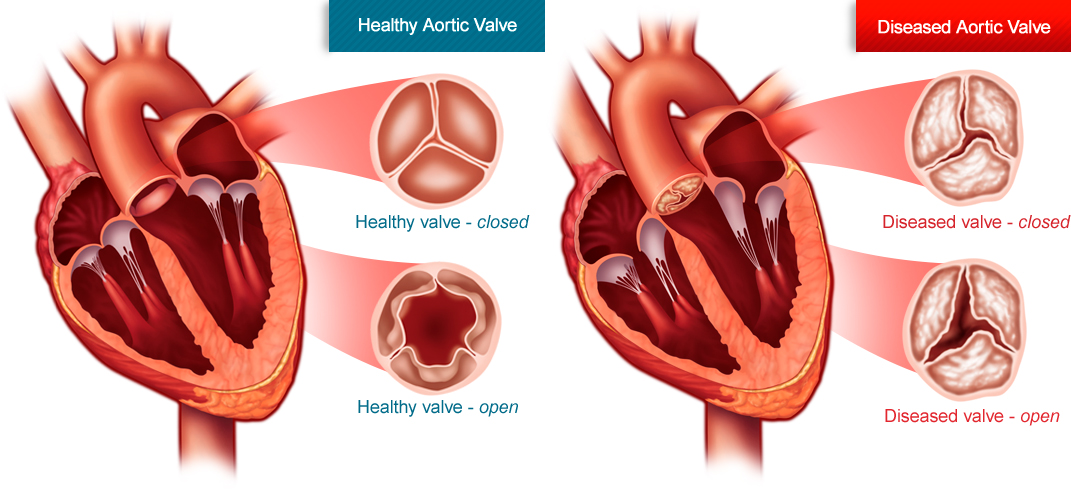What is aortic stenosis?
One of the most common valve diseases is severe aortic stenosis - a narrowing of your aortic valve opening that does not allow normal blood flow. It can be caused by a birth defect, rheumatic fever, radiation therapy or can be related to age.
Most often found in elderly patients, severe aortic stenosis can be caused by the build-up of calcium (mineral deposits) on the aortic valve’s leaflets. Over time, the leaflets become stiff, reducing their ability to fully open or close. When the leaflets don’t fully open, your heart must work harder to push the blood through the aortic valve to your body. Eventually, your heart gets weaker, increasing your risk of heart failure, stroke and even death.
About 5 million Americans are diagnosed with heart valve disease each year, according to the American Heart Association. After the onset of symptoms, patients with severe aortic stenosis have a survival rate as low as 50 percent at two years without aortic valve replacement.

What are the symptoms of aortic stenosis?
While some individuals may not have symptoms, others may experience chest pain or palpitations (rapid rhythms or skips); shortness of breath or difficulty catching your breath; fatigue, weakness or inability to maintain regular activity level; lightheadedness or fainting and swelling.
How is aortic stenosis diagnosed?
During a routine physical exam, your physician will listen to your heart with a stethoscope. If he or she hears a heart murmur (abnormal sound in your heart due to unusual blood flow), you may be asked to complete additional diagnostic testing or meet with a cardiology consultant to determine if a problem exists and whether it’s severe enough to treat.
Diagnostic testing can include:
- Echocardiogram
- Cardiac catheterization
- CT scan
- Lung function testing
- Carotid artery ultrasound
How is aortic stenosis treated?
Initially, mild or moderate symptoms are managed with medication and lifestyle changes. But ultimately the only effective treatment for severe aortic stenosis is valve replacement. At the Heart Hospital, we have a dedicated team of specialists at the Valve Clinic that are experts in replacing valves.
Have you been diagnosed? Get a referral.
If you have been diagnosed with aortic stenosis in the past or suspect you may have a valve condition based on the symptoms listed below, call 912-819-TAVR or ask your physician about visiting the St. Joseph’s/Candler Valve Clinic to learn more about the best treatment options for you and your complex valve condition.